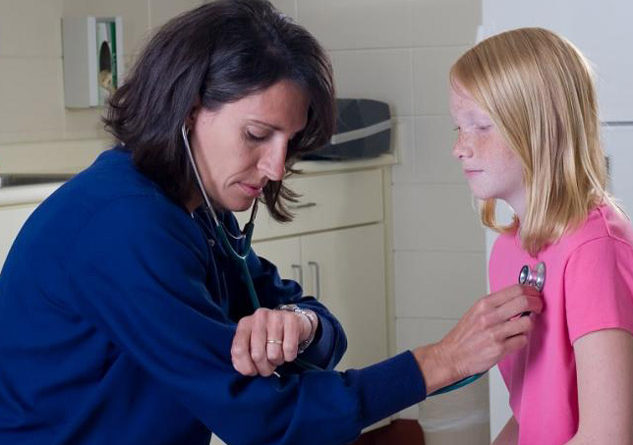Kristen Harper and David Murphey
Child Trends
On July 30th, 52 years ago, President Lyndon Johnson signed Medicaid into law. As the program’s anniversary approaches this weekend, and Congress continues to debate its future, it may be unclear to many—especially those who are not Medicaid beneficiaries—how significant changes to Medicaid might affect them.
In 2015, 15 percent of U.S. adults ages 19 through 64 received health insurance coverage through Medicaid. However, a much larger proportion of our nation’s school-aged population—nearly 30 percent of children ages 6 through 19—receive health insurance through Medicaid. That’s 15.2 million children.
With more than 15 million kids eligible for Medicaid support, there’s a fair chance your neighborhood school relies on Medicaid to provide critical services—from school nurses, vision and hearing screenings, and immunizations, to mental health counseling, health education, and referrals to other community-based services. According to the Center for Budget and Policy Priorities, nearly $4 billion in school-based health services were paid for by Medicaid in 2015.
Even when children are not direct recipients of Medicaid funding, the services Medicaid supports may be key to supporting their school’s activities related to substance use and violence prevention, and other initiatives that reach the broader student population. Because schools can claim reimbursement under Medicaid for allowable services provided to eligible students, as well as for a portion of their costs for administering these programs even when they are offered without charge to all students (an example is vision and hearing screening), Medicaid funding makes school-wide services more affordable. Further, these dollars allow schools to spend their limited resources on other priorities.
It’s important to note that the services Medicaid supports can address a wide range of issues beyond students’ physical health. Services related to dropout prevention are one example. This month, the U.S. Department of Education released an issue brief that covered the prevalence of dropout prevention strategies in high schools across the nation. Two of the strategies covered—wraparound services and school-based health centers—often use Medicaid support to deliver mental health screening and primary medical care.
Shifts in the Medicaid program might also impact schools’ ability to adequately serve children with special needs. In the absence of these dollars, schools may be forced to find other sources of funding to support children with disabilities as required under the Individuals with Disabilities Education Act. Children with special needs frequently have complex plans for medically necessary accommodations, as well as treatment; the Early and Periodic Screening, Diagnostic, and Treatment benefit, which is funded by Medicaid, is one important source of funds that supports case management (coordination of care) for these children.
It would be a mistake to make assumptions about which neighborhood schools, and which children, depend on Medicaid. While our nation’s schools continue to be socioeconomically and racially segregated, school-aged Medicaid recipients span racial and ethnic groups—33 percent are white, 22 percent are black, and 36 percent are Hispanic. Further, low-poverty schools are nearly as likely to offer the kind of supplemental services that are often funded through Medicaid: they are nearly as likely to offer at least one social service (94 percent) as high-poverty schools (97 percent), and only somewhat less likely to offer services on campus (74 vs. 81 percent, respectively). (The breakdown in Medicaid support for high-poverty schools vs. low-poverty schools is not readily available.)
As the debate over Medicaid continues, we should consider the role the program plays in the overall well-being of the young members of our community—including the young people in our lives.






